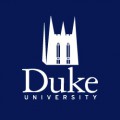 The National Association for College Admission Counseling (NACAC) 2012 yield numbers are in, and several American universities have emerged as strong winners amidst a higher education market more difficult to predict than ever before.
The National Association for College Admission Counseling (NACAC) 2012 yield numbers are in, and several American universities have emerged as strong winners amidst a higher education market more difficult to predict than ever before.
The 2011-2012 yield rates (the number of students who choose a school after official university acceptance) show that Brigham Young University – Provo of Utah with a 79.7 percent yield rate, assumed the lead among full undergraduate/graduate/doctorate universities. Harvard University, still ranked number one in national university rankings, came in a close second with a 75.9 yield rate.
Stanford University of California, the University of Nebraska, and the New York-based Yeshiva University all reported high rates, too, averaging around 69 percent. Of course, a lot of variables factor into yield numbers, which are individually reported by the schools themselves. Some figures may be bolstered by early action options, and general location remains a key factor in which universities students ultimately choose.
But the NACAC report digs a little deeper and uncovers increasing uncertainty in these college numbers. Enrollment has become a highly diversified experience for the average college-picking student. More students than ever before are submitting multiple applications to schools before making up their minds. This is yet another sign that the higher learning industry is becoming, like so many other markets, more buyer-focused.
The power-to-the-student trend has also led to slightly lower university acceptance rates, which dropped from 69.6 percent in 2002 to 63.8 percent in 2011. Unsurprisingly, as students submit applications to a greater number of schools, the average yield rate has fallen significantly, from 49 percent to 38 percent in the same time frame. In a defensive response, admission strategies have moved to a focus on overall academic achievement and clear interest in attending the school, rather than outdated factors like class rank.
“While the college admissions process has become less predictable in the past decade, one thing is clear – students, parents, admissions officials and policymakers all need good information on which to base their decisions,” said Joyce Smith, NACAC’s chief executive officer. “Today’s report can help inform that process.”
[cf]tracking[/cf]






No Comment